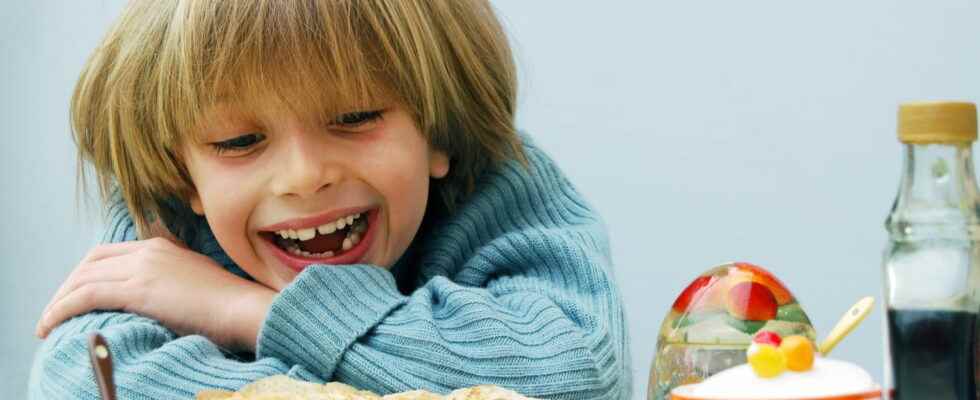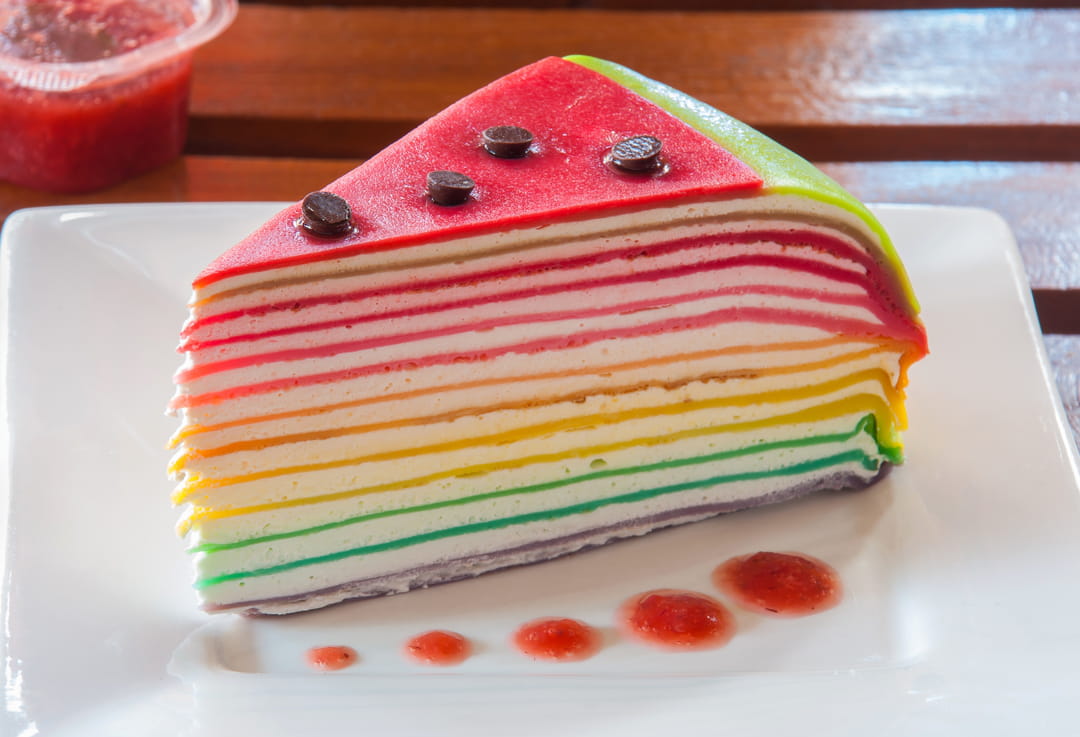CANDLEMAS. Why do we eat pancakes on Candlemas? If February 2 corresponds to a biblical event for Christians, pancakes would have an atheist origin.
[Mis à jour le 30 janvier 2023 à 19h30] Thursday 2 february Candlemas will be celebrated. Does celebrating Candlemas by eating pancakes have a connection with Christianity? The origin of Candlemas, the candlelight festival, is actually quite disputed.. In Roman antiquity, it was at this time of year, at the beginning of February, that Lupercalia was celebrated, the celebration of the divinity of fertility and breeding, Faunus. The party had nothing to do with pancakes, it was rather a ceremony pushing individuals to indulge in a certain debauchery. But the spirit of the celebration was to mark the beginning of a new period of the year, with in particular the first sowing in the fields. In the ancient world, many festivals exist across Europe at this time to celebrate renewal and the return of light (the days finally lengthen significantly). In Ireland, for example, it was a divinity of fertility, Imbolc, to whom homage was paid.
Christianity appropriated the date of February 2, at least from the fourth century, before the event was formalized by Pope Gelasius. On this day, Christians celebrate the presentation of Christ in the Temple, 40 days after Christmas, the day of his appearance in the world. During the presentation of the son of Mary, Symeon would have recognized the “divine nature” of Jesus. It is this sacred fact that will give Christians the meaning of Candlemas, where the light brought to the Earth will be celebrated. Believers will then develop the use of lighting candles. Hence the name of Candlemas, which comes from the Latin “Festa candelarum”, “feast of candles“.
While some insist on respecting the classic pancake recipe, others like to add a bit of fantasy to the tradition by opting for a regional or completely original version. And all ingredients are allowed. Here first below, a easy pancake recipe in video, then you will find below the classic crepe recipe, followed by more original recipes, from the crepe Suzette to the apple crepe with the Sabayon of Calavados via the crepe cake, the Breton recipe of Farz Buen or Austrian from Kaiserschmarrn.
“Simple as pancakes”
- Classic recipe (ingredients for 4 people) : 250 grams of flour, 0.5 liters of milk, 50 grams of melted butter, 4 eggs, 2 tablespoons of sugar, 1 pinch of salt.
- Preparation : First, put some flour in a salad bowl. Add next sugar, eggs and melted butter. Then beat everything, pouring milk little by little: you will thus obtain a fluid and smooth batter. It should then be let rest the dough at room temperature for one to two hours. An ultra-important phase, which should not be avoided.
- Cooking : After the preparation and the waiting time, you can pour the batter onto a heated pan. Don’t forget to spread oil on the pan between each crepe using a paper towel. Without this, it will be impossible to blow it up, as required by the tradition of Candlemas. To make it fly well, first loosen it slightly with a spatula, then shake the pan to make sure that the pancake is well unstuck. Next, a dry and firm blow of the wrist should give the expected result!
- Garnish : Depending on taste, the accompaniment varies: sugar, chocolate, salted butter, honey, caramel, jam, chestnut cream, lemon, fruit… In short, the pancake filling is endless. And there are also regional particularities: calvados and apples in Normandy, beer in the dough in Alsace…
- The Crepe suzette is a traditional crêpe flambée recipe for purists. She mixes orange zest, butter, sugar cubes, orange juice with a cup of Grand Marnier. With the remaining Grand Marnier, it is traditional to flambé the pancakes in front of the amazed guests. Discover the recipe for Grand Marnier crepe or the simple recipe Crepe suzette.
- In Brittany, the Farz Buen is a very thick pancake batter, which mixes in the pan as if it were scrambled eggs, with lots of butter and sugar. Reduce the mixture into small golden and lightly toasted pieces using the spatula. Decorate everything with jam or cocoa powder. Recipe.
- Austrian specialty, kaiserschmarrn is the favorite pancake recipe of François-Joseph II and Empress Sissi, a real delight for those who usually miss their pancakes! This is a pancake batter lightened by whipped egg whites, which is cut into large irregular pieces, very easy to make. Decorated with raisins soaked or not in rum, it can be accompanied by plum compote or plums. Discover the recipe.
- the crepe cake is the result of a dozen pancakes stacked in multiple floors. Then, it’s up to you to decorate it with the ingredients you prefer. The pancake cake can be dark chocolate, nutella, lemon cream, strawberry coulis, caramel, and even in its salty version, with hard-boiled eggs and tuna, salmon or crab/avocado! Discover all the variations of the crepe cake recipe.
- Looking for even more original pancakes? Sushi of sweet pancakes, rainbow-colored pancakes, small banana pancakes, gluten-free lace pancakes, chaplain or pancake lollipops, lime and coconut pancake, samosas pancakes, intense chocolate pancakes, cone pancakes, bouquet of pancake roses… Our 47 most original pancake recipes.
At the beginning of the 21st century, most French people perpetuated this gastronomic rite, with regional particularities that have become more evident in recent decades: Calvados and apples in Normandybeer in the dough in Alsace and in the North, Froment flour in Brittany, etc. Find all our suggestions for fillings below, with the recipes that accompany them when it can be more complex than a simple addition of jam:
Depending on taste, the ingredients vary: banana and chocolatesalted butter, Orange BlossomHoney, apple and caramelChestnut cream, apple and Val de Rance ciderjam, beerlemon, fruit, maple syrup, candies or simply with a little sugar.
La Chandeleur owes its name to the “Festa candelarum”: in Latin, “feast of candles”. Believers will then develop the use of lighting candles or candles. This tradition is particularly alive in churches: among Catholics, the priest can take advantage of this holiday to bless the candles of people who come to pray, purchased in advance and which will be used during the year. Devotees often take one home and display it in their window on February 2. In the past, it was customary to remove objects related to Christmas (holly, nativity scene, etc.) on the occasion of Candlemas. Golden flesh and disc-shaped, the appearance of the Candlemas crêpes resembles that of the Epiphany galette. In the countryside, it was said that the flour of the year would be lost if it was not used for the crêpes de la Chandeleur. Around the 5th century, the peasants therefore used the excess flour from the sowing to prepare pancakes symbolizing future prosperity.
Christianity appropriated the date of February 2, at least from the fourth century, before the event was formalized by Pope Gelasius. On this day, Christians celebrate the presentation of Christ in the Temple, 40 days after Christmas, the day of his appearance in the world. During the presentation of the son of Mary, Symeon would have recognized the “divine nature” of Jesus. It is this sacred fact that will give Christians the meaning of Candlemas, where the light brought to the Earth will be celebrated. Believers will then develop the use of lighting candles. Hence the name of Candlemas, which comes from the Latin “Festa candelarum”, “feast of candles“.




